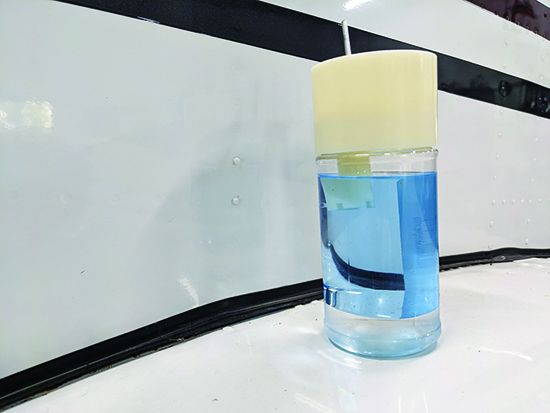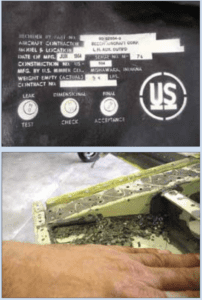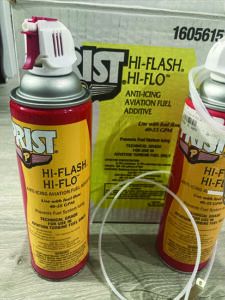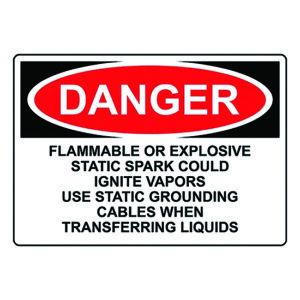
Everything seemed routine. I was cruising along in nice weather. The satellite radio played soft music in the background. Suddenly, the engine began coughing, and quickly lost power. I tried manipulating the throttle but nothing changed; it almost seemed like it wasn’t connected to the engine at all. I looked around for options, not panicking yet, but a step or two closer.
Just as suddenly, the engine started working again and, after assessing the situation, I concluded that there had been a momentary fuel contamination episode and decided it was okay to continue to my destination.
Luckily, I was in my car, not an airplane.
WHAT IF?
What happens when contaminated fuel reaches an engine? My car coughed and sputtered, and produced very little power. The same can be true for aircraft. At higher altitudes, you have more options but repeat after me: Glide. Grass. Gas. “Glide” means establish the best glide attitude, using angle of attack and/or airspeed, if you need to travel some distance to a suitable place to land. Most CFIs teach pitching to best glide speed. Glider pilots will tell you that being a little fast has very little effect on performance, while being a little slow really hurts performance. So pitch for the right attitude and let the airspeed settle in before fine-tuning it.
And you can look outside while you pitch for attitude, since “Grass” means pick a place to land. You did this before the engine sputtered, right? No, I probably didn’t either, but we all should, especially in singles.
“Gas” is where we get to the problem at hand. There are a few options that a pilot would try any time an engine starts to sputter and cough, even if fuel contamination isn’t suspected. Switch tanks: maybe the bad stuff in the fuel only went into one tank. That would have worked in my car, because there was only a little bit of contamination. If the contamination is more than momentary, messing with mixture and fuel pumps won’t do much. The thing is that in this situation, the pilot doesn’t know for sure that there is fuel contamination, so you have to throw every solution you know at the problem.
WATER
Of all fuel contaminants, the most important is water. It’s less of a problem now because of improvements in the whole fuel handling process. Take, for example, fuel caps. The fuel cap on my 1946 Taylorcraft BC-12D was basically a mayonnaise jar lid, and it is easy to imagine water getting past it. I never had a problem, but I lived in the desert and kept the airplane hangared. I know I never had a problem because I sampled the tanks every time I flew it.
Dissolved water isn’t usually a problem, but “isn’t usually” is not a good policy when it comes to safety. Dissolved water can freeze and form ice crystals, which can keep fuel from flowing. Some airplanes have fuel heaters, usually involving passing fuel lines through oil tanks or oil lines through fuel tanks. These are great because there is no need for pilots to do anything.
How does water get into the fuel? One common source is water in the air. Suppose you fuel in the late afternoon, only adding enough for what you need the next morning. In humid parts of the world, the cool overnight air can’t hold as much water. That’s the source of the dew you see on the grass on a cool morning. But the same process happens in your fuel tanks, and what was dry fuel when you put it in now has water at the bottom of the tank. Sump until the water is gone.
You can prevent this by topping the tanks, which means there is minimal air in them. But that can be impractical. If you anticipate a heavy load, you need partial fuel. That’s fine, but you can’t approach a morning flight after partial fueling the night before and think that you don’t need to check the fuel because you checked it recently. You need to check for water again.

While water is by far the most prevalent contaminant we might find in our fuel tanks, it’s not the only one. The methods and materials used in constructing the fuel tank may be part of the problem. There are four basic fuel-tank designs in the personal airplanes we fly.
One is a stamped sheet-metal container, either internal to the wing and/or fuselage, or forming part of it. Ideally, these tanks are welded together from sheet metal and don’t use a sealant of any kind, just bare metal. They’re subject to corrosion, however, and iron/aluminum oxide particles can form, eventually getting into the fuel.
Another construction technique is to rivet or bond sheet metal tanks together, and then seal the seams with a material supposedly impervious to avgas or jet fuel. Depending on the material and the tank’s age, the sealant can deteriorate and, you guessed it, get into the fuel. They also can corrode. The bottom image at right shows deteriorated sealant.
Many airplanes store their fuel in a flexible bladder inserted into an internal wing bay. These are replaceable and can wear abnormally, especially at filler ports and sump fittings. They, too, also can deteriorate, allowing small pieces of the rubber-like material to enter the fuel system, perhaps clogging it. The top image is a new fuel bladder.
A fourth material used in fuel tanks is composite, perhaps fiberglass or even plastic. Fiberglass often is used in manufacturing wingtip tanks while plastic might be found storing the fuel of an ultralight or LSA. They typically don’t need to be sealed and don’t corrode. As a result, a properly cured plastic or fiberglass tank likely won’t contribute contaminates, but might develop other problems, like cracking. — J.B.
FBOs
Fuel trucks and islands typically have stickers and placards showing the last time various services were performed, or when they are due. I’d be a little concerned if I didn’t see one. Busy fuelers tend to be less of a problem, because the whole system gets flushed by regular use. I’ve bought fuel from some places that didn’t use very much, but I sumped the tanks very carefully after fueling.
It might be a little bit of a stretch of the definitions to call having the wrong fuel “contamination,” but it still happens, and the effects are ugly. Turbine engines can burn avgas, with limitations, but piston airplanes can’t burn jet fuel. Period. If you are getting fuel from a truck, at least make sure they brought the right truck.
And tempting as it is to get out of the rain and cold while somebody else does the work, supervising fueling is far better. That way you know that you got the correct amount of the correct fuel into the correct tanks in the correct order.
AFTER SUMPING
What happens to the fuel that you sump? Some pilots just pour it out on the ground, but the fuel can dissolve the pavement, and that leads to airport infrastructure problems pretty quickly. I used to prefer to toss the contents of the sampler cup into the air (facing downwind, of course), so it would atomize rather than be concentrated in one spot.
I now fly in Oregon, and both of those methods are illegal. In Oregon and elsewhere, FBOs and owners equip their airplanes with large, filtered samplers. The pilot drains some fuel into the sample cup as usual, and, if it is clean, puts it back into the tanks. I have not heard of any problems doing this.
Transients may not want to or cannot buy one of these fancier cups. One large GA airport near me has barrels to dump your sumped fuel into. They say they use this fuel to power the lawn mowers.

Several commercially available additives help prevent contamination problems, especially in jet fuels. It seems counter-intuitive to add something to prevent contamination, especially something considered hazardous. But it works.
Their use is so common that when buying jet fuel, you specify “positive” or “negative,” meaning whether you want the additive or not. This is between you and your airplane, so check the POH or AFM. Some fuelers only carry pre-mixed fuel, so you get the additive whether you want it or not. There is no harm in having it, and it only costs a few pennies a gallon.
The mixing process is pretty complicated. The additive has to be added continuously with the fuel, not just dumped in before or after fueling. If you look sometime, you might notice an extra little hose next to the fuel nozzle; that’s for the additive.
SOLIDS
Some aircraft are victims of a tank lining product that can deteriorate with time. Between flights more of the pink material would detach, and every time the tanks were sumped, mosquito-sized lumps of pink would appear. They were too big to fit through the filters, so never entered the fuel lines, and they were rare enough that there was little or no danger of them blocking the fuel ports. But, again, sumping every time was important in order to keep the number of particles manageable.
ON THE ROAD AGAIN
A couple of weeks after the incident in my car, I was driving the same route and had the same problem. I’d bought gas at the same station; it was the closest station to my house. I won’t buy fuel there again. A few weeks later, I had the same problem. This time it was the same brand fuel but from a different gas station. I’ve never bought that brand again, either.
CONCLUSIONS?
Supervise the fueling. Sump the tanks to look for contamination. And have a plan for when the bad stuff hits that part of the airplane just behind the fan.

Static electricity usually is not a problem unless it’s allowed to build up. That’s why fuelers always attach a ground wire to aircraft. If you’re doing self-serve, the first question the machine asks is usually, “Is the aircraft grounded?” Grounding lets the static electricity flow and prevents build up.
Plastic can be a strong source of static electricity. People using auto gas STCs bring plastic jugs of fuel onto the ramp. This is scary stuff! I once saw a pilot standing on the bed of a pickup truck pouring auto gas from plastic jugs into a Cessna 150. The truck’s tires insulated it from ground, so without another grounding method, the static electricity could build until ignition. Recently in my town, a man was fueling his trailered boat at a gas station. The trailer tires prevented grounding. The explosion killed him.
Jim Wolper is an airline transport pilot and retired mathematics professor. He’s also a CFI with single-engine, multi-engine, instrument and glider ratings.



